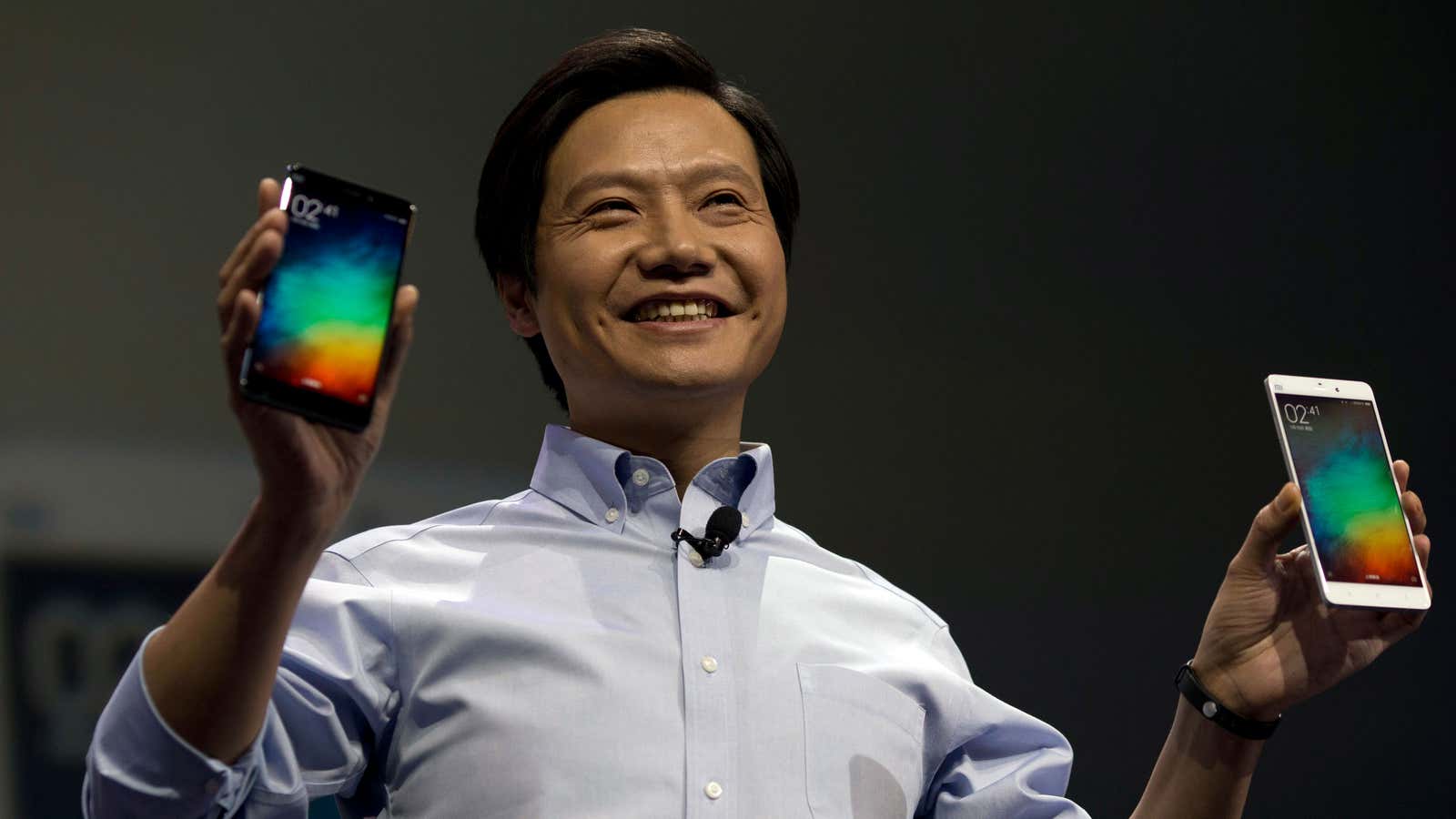In 2011, Xiaomi released its first phone in China. Over the course of the next few years, it became the most popular smartphone maker in the largest smartphone market in the world.
Though many Chinese consumers have a taste for luxury—the country’s been a huge driver for Apple’s growth—Xiaomi’s strategy has focused on offering high-end hardware at low prices. The company, which now controls 16% of China’s market share, has had an noticeable effect on the country’s smartphone market and what consumers have come to expect from homegrown brands.
Starting in 2012, China saw the rise of two smartphone trends: the cost of these devices started falling faster than in years past, and more consumers decided to buy phones produced by Chinese companies (which, aside from Xiaomi, include Huawei, Coolpad, Meizu, Oppo, Vivo, and a slew of others). That year, Chinese brands collectively had 62% of smartphone market share, up from 34% in 2011, according to consultancy McKinsey. In 2014, the latest data available from the firm, the average price of smartphones came down to $201 (though it has likely since increased), and 77% of them were made in China.
There has been a fundamental change in strategy for tech companies in China, McKinsey explains. In the past, many Chinese companies made “good enough” products—such as cheap TV sets with 80% of the features and quality as foreign brands—Xiaomi helped usher in a wave of producing “cheaper and better” products—as good as the foreign ones but “priced for the Chinese market.”
